Implen Journal Club
Implen Journal Club
Welcome to the Implen NanoPhotometer® Journal Club. Here we will highlight relevant publications where the Implen NanoPhotometer® helped researchers to unravel the mysteries of modern molecular biology.
Current Month Journal Club Issue
April 2024| Full Newsletter (html) (pdf)
Utilizing KingFisher Technology for Microbial Profiling in Breast Cancer: Unique Signatures in Ethiopian Women
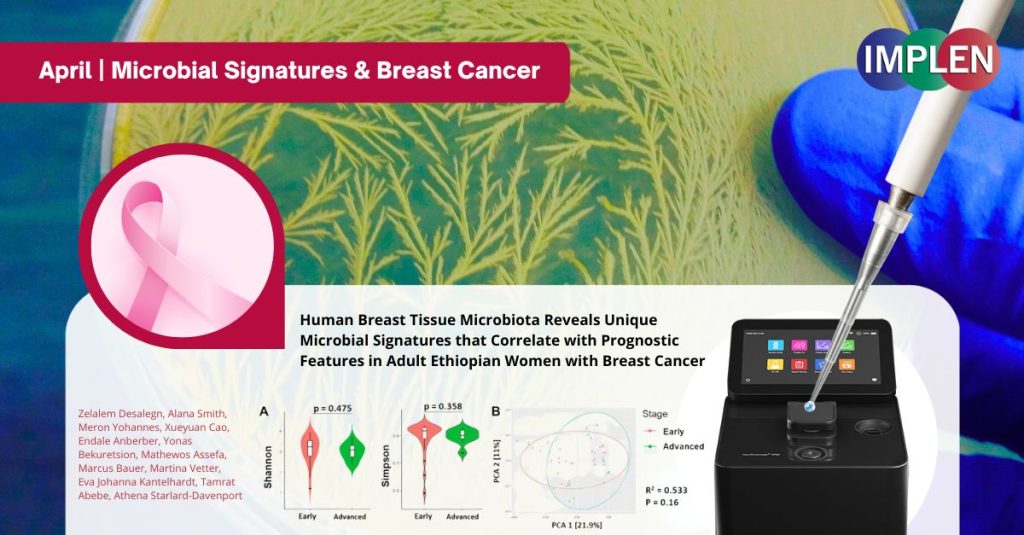
The first issue of the Implen NanoPhotometer® Journal Club is highlighting the study “Human Breast Tissue Microbiota Reveals Unique Microbial Signatures that Correlate with Prognostic Features in Adult Ethiopian Women with Breast Cancer” conducted by Zelalem Desalegn et al., published in the Journal of Cancers, which investigated the microbial profiles in breast tumor and normal adjacent tissues (NAT) in Ethiopian women with breast cancer (BC). This research marks the first comprehensive exploration into the association between microbial dysbiosis and clinicopathological factors in Ethiopian women.
Utilizing fresh frozen breast tumor and normal adjacent tissues (NAT) from the same donors, the study employed advanced molecular techniques, including DNA extraction using the KingFisher robot for high-quality microbial DNA isolation. This automated process ensures integrity and nuclease-free DNA crucial for accurate gene sequencing. This research identified 14 distinct microbiota genera between tumor and NAT tissues. Notably, genera such as Burkholderia correlate strongly with aggressive breast cancer types like triple-negative and basal-like tumors, whereas Alkanindiges, Anoxybacillus, Leifsonia, and Exiguobacterium are associated with HER2-E tumors. Luminal A and B tumors showed weaker microbial correlations.
The NanoPhotometer® was used in this work to determine the quality and quantity of nucleic acids.
Next, the Implen NanoPhotometer® Journal Club is focusing on groundbreaking research by Albaladejo-García et al., published in the Journal of Biomedicine and Pharmacotherapy. This work demonstrated the therapeutic potential of milk-derived small extracellular vesicles (sEVs) for delivering curcumin, a compound renowned for its antioxidant and anti-inflammatory effects, as a treatment for chronic liver disease.
Despite curcumin’s promising health benefits, its practical use is hindered by its poor solubility and poor bioavailability. By utilizing sEVs as a delivery mechanism, this research addressed these limitations, leveraging the vesicles’ nanometric scale, non-immunogenicity, and capacity to hold hydrophobic substances. This study revealed that curcumin, when encapsulated in sEVs, showed increased cytotoxicity against tumor cells (RAW264.7 and HepG2) while sparing primary hepatocytes, especially at elevated concentrations, suggesting targeted toxicity. Furthermore, in-vivo experiments on a liver fibrosis model highlighted the therapeutic advantages of sEVCurAc (curcumin actively encapsulated within sEVs), including a marked decrease in liver damage indicators and fibrogenesis.
The incorporation of curcumin into the sEV framework was precisely quantified using absorbance measurements with the Implen NanoPhotometer®.
Unlocking New Horizons in Liver Disease Therapy: Milk-Derived Vesicles as Curcumin Carriers
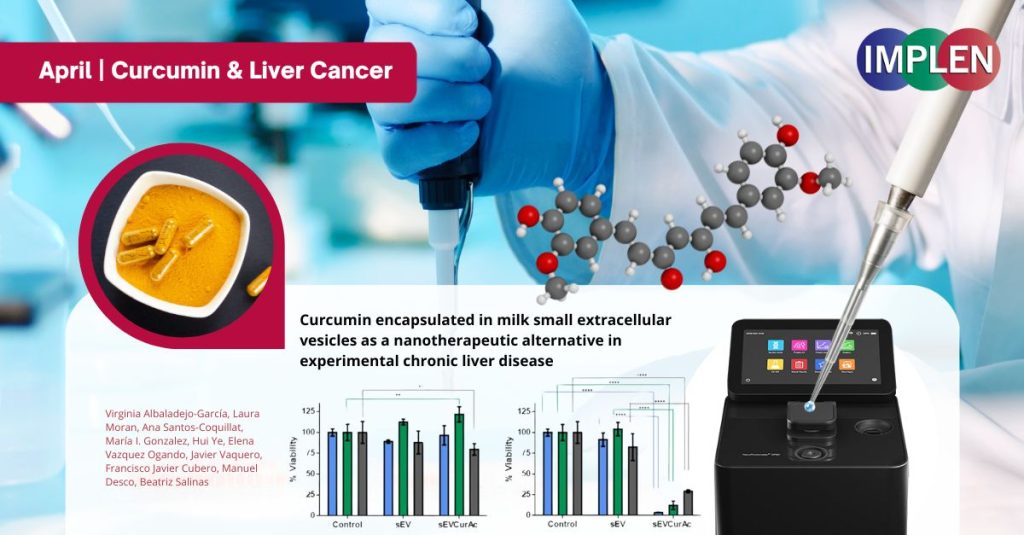
Unlocking the Secrets of Drought Resilience: How Sunflower Genotypes Shape Fungal Communities
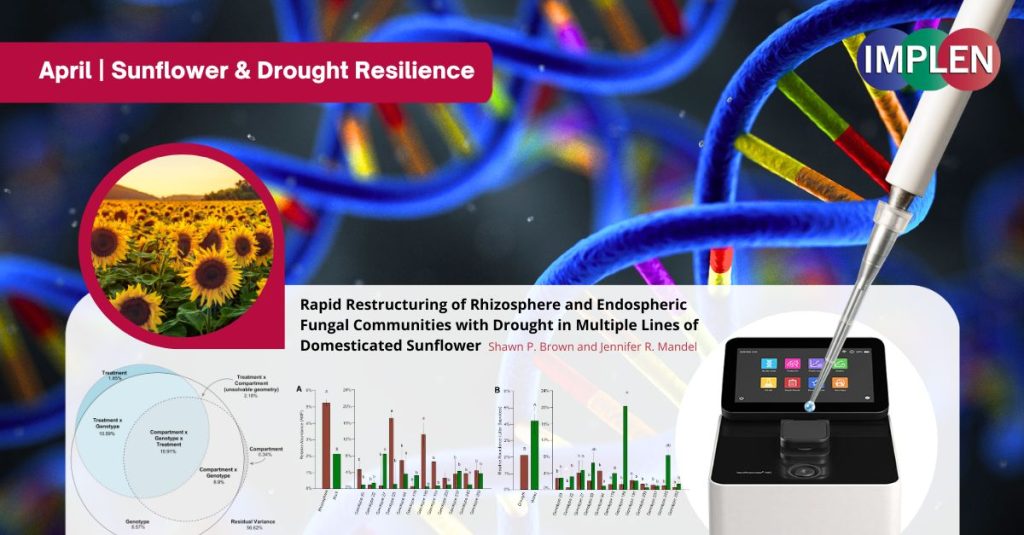
April showers bring May flowers, but what happens when the rains don’t come? This week’s Implen NanoPhotometer Journal Club is highlighting the work of Mandel et al., published this year, delves into how drought conditions reshape the fungal communities associated with sunflowers, emphasizing the interplay between different sunflower genotypes and their fungal counterparts.
Utilizing a controlled drought experiment involving diverse sunflower lines with varying drought resistances, the study investigated the interaction between watering conditions and sunflower genotypes on rhizospheric (soil surrounding roots) and endospheric (root interior) fungal communities.
The findings of this study revealed that fungal community structures are influenced by several factors including watering treatments, sunflower genotype, and their interactions with the plant compartment. Notably, it was shown that the abundance of plant pathogens and mycorrhizal fungi change with the host’s genetic diversity, underscoring the importance of genotype in shaping these microbial communities.
The Implen NanoPhotometer® N60 was used in this study to quantify DNA from sunflower rhizosphere and endosphere samples, ensuring consistent DNA concentrations were normalized to 10 ng/μl for downstream PCR and sequencing processes.
The next issue is highlighting the article “Heat ‘n Beat: A Universal High-Throughput End-to-End Proteomics Sample Processing Platform in under an Hour” by Dylan Xavier and colleagues, which presents a significant advancement in the field of proteomics sample preparation. Their work recently published in the journal of analytical chemistry introduced a robust, rapid, and nearly universal protocol for processing small solid tissue samples for mass spectrometry-based proteomic analysis. This new method, referred to as Heat ‘n Beat (HnB), streamlines the preparation process, significantly reducing the time from tissue sample to mass spectrometer loading to under an hour.
Key features of the HnB protocol include a one-tube homogenization and digestion method applicable to various tissue types, irrespective of their preservation methods. The protocol integrates initial washing, tissue disruption, lysis, reduction, alkylation, and proteolysis into a single tube operation, minimizing handling and potential sample loss. This method demonstrates an improved peptide yield, nearly doubling the output compared to previous techniques like the ABLE method, while maintaining high digestion efficiency (85–90%).
In the “Heat ‘n Beat” proteomics study, the NanoPhotometer® N60 was used to measure the concentration of peptides via UV absorption at 280 nm, ensuring consistent loading onto the mass spectrometer for reliable analysis.
Revolutionizing Proteomics: Introducing the Heat ‘n Beat Method for Rapid, High-Throughput Sample Processing
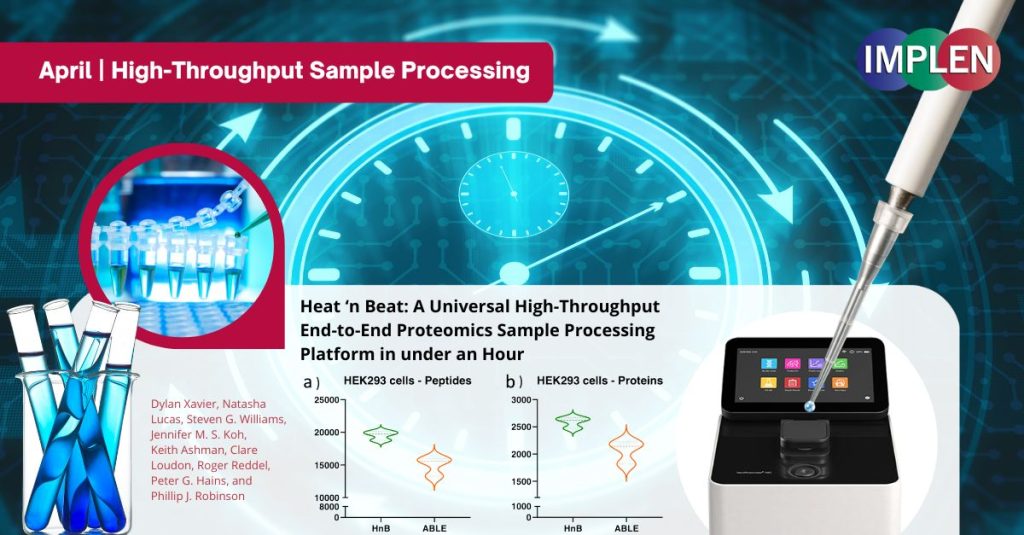
Unlocking the Potential of Blue-Light-Activated Sn(IV)-Porphyrins in Combatting Antibiotic-Resistant Bacteria: A Promising Advance in Photodynamic Therapy
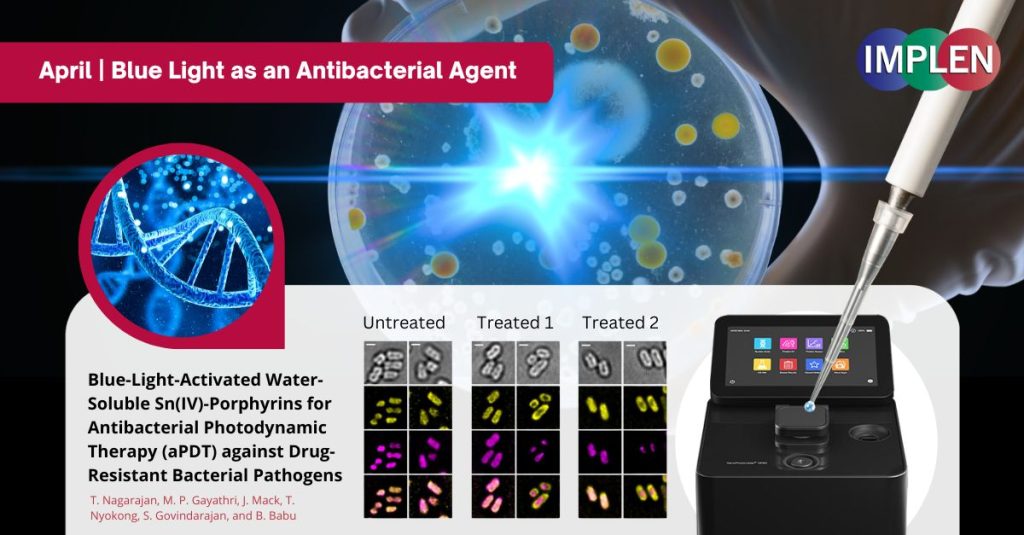
The last issue is highlighting a study by Nagarajan et. al. that investigated the effectiveness of blue-light-activated water-soluble Sn(IV)-porphyrins as antibacterial agents for photodynamic therapy (aPDT) against drug-resistant pathogens. These compounds, when excited by a 427 nm LED, were shown to produce reactive oxygen species that effectively killed both Gram-positive and Gram-negative bacteria.
Significant findings of this study included the porphyrins’ ability to cause extensive damage to bacterial DNA and membranes, crucial for their potent antibacterial action. This study provided detailed insights into the mechanisms of cell death induced by these porphyrins, emphasizing their potential as alternative treatments to combat antibiotic-resistant bacterial infections. This could be particularly beneficial in treating skin infections that are unresponsive to standard antibiotics, offering a promising solution to the escalating problem of antimicrobial resistance.
The Implen NanoPhotometer® NP80 was used in this study to quantify isolated genomic DNA from the E. coli-K12 strain. The NanoPhotometer facilitated accurate dosage calculations of the porphyrins, ensuring that each reaction mixture had a consistent amount of DNA (250 ng per reaction).